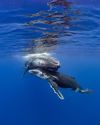
WHAT ARE RARE EARTH METALS?
The Periodic Table of Elements contains chemical information on over 118 different elements and their various properties that can be found on Earth today. Out of these 118 elements, 17 of them are known as rare-earth metals (REMs) or rare-earth elements (REEs). They were first given the name “rare earths” because it was originally thought that there was a short supply of these elements on Earth. These elements are typically dispersed and rarely found in concentrated amounts, but further studies have shown that there is in fact an abundance of these elements in many workable deposits around the world. These metals were only deemed rare, because they were often found in very small concentrations at a time, meaning ore deposits are not commonly economically exploitable. Ideally, for a rare earth metal ore to be economically viable, it should contain more than 5 percent rare earths. If they are mined along with another product, such as iron, this allows economic recovery when concentrations are as low as 0.5 percent by weight.
The existence of these rare metals did not come to light until the 18th century. Swedish army Lieutenant Carl Axel Arrhenius found a unique black mineral in a small quarry in Ytterby, did a small town near Stockholm. The mineral was found to be a mixture of rare earths, and in 1803, cerium (Ce) was the first individual element to be isolated. The first commercially produced rare-earth element was later mined in the 1880s in Sweden and Norway, before moving to foreign production in Brazil in 1887, and then India in 1911.
Denne historien er fra AG 05/2020 144-utgaven av ASIAN Geographic.
Start din 7-dagers gratis prøveperiode på Magzter GOLD for å få tilgang til tusenvis av utvalgte premiumhistorier og 9000+ magasiner og aviser.
Allerede abonnent ? Logg på
Denne historien er fra AG 05/2020 144-utgaven av ASIAN Geographic.
Start din 7-dagers gratis prøveperiode på Magzter GOLD for å få tilgang til tusenvis av utvalgte premiumhistorier og 9000+ magasiner og aviser.
Allerede abonnent? Logg på

Revealed Silver
Known in Latin as argentum, originating from the Sanskrit word argunas meaning \"shining\", silver is often an overlooked metal in comparison to gold, though it has properties that make it a unique and special element.

Celebrating the 2023 Rolex Awards for Enterprise Laureate: Liu Shaochuang
As a part of the Perpetual Planet Initiative, the Rolex Awards for Enterprise continues to expand the initiative’s growing portfolio, supporting exceptional individuals with innovative projects in areas such as the environment, science and health, applied technology, cultural heritage, and exploration.

The Treasures of Tahiti and the Journey of Giants
For decades, French Polynesia's beguiling islands have adorned travel brochures, alluring honeymooners with turquoise lagoons, overwater bungalows, and lush volcanic peaks. Some 7,000 kilometres from its closest neighbours, and spread over five main island groups, the French territory's real treasures are not just what you see in the splashy brochures. Get ready for untamed, wild, ocean encounters.

Asian Blades
Historically, swords served as crucial tools for warfare and symbols of social status, shaping military strategies and cultural identities across the region. Fascinating objects found in museums, these ancient items of silverware are just as likely to be found in private collections around the world

Bear Witness REVISITED
Through soulful eyes we see ourselves These creatures sad and splendid For though they be confined to bars Flesh bodies crushed, tormented Their spirits burn with freedom's fight Mad, somewhat demented... Like the rusting strands of metal twine That hold their fate suspended Cruelty is an irony A stage for man To play his hand In wickedness or wonder

A Spectrum Of Scarlet: The Symbolic Red Of Asian Flags
A common thread that unites many Asian flags is the prominent use of red, a colour rich with symbolism

Curry: A World of Flavour, Tradition, and Culture
From its humble beginnings in India, the concept of "curry" has evolved into a culinary language understood around the world

The Power Of Asian Red Fruits - Discover 10 Nutrient-Rich Gems Of The East
In the vast tapestry of Nature, Asia has gifted the world an array of unique and vibrant fruits, particularly those in shades of red. These scarlet-hued gems, packed with flavour and nutrients, not only add a burst of colour to your plate but also carry valuable health benefits. From antioxidant-rich goji berries to the exotic dragon fruit, let's explore some of the most popular red fruits from Asia and discover why they should be part of your diet.

Bhutan: A World Of Its Own
With its majestic monasteries, red-robed monks, charming rural villages, and vibrant festivals, the Kingdom of Bhutan is a Himalayan paradise that promises an enriching travel experience like no other

Take The Red Pill
From the vermilion torii gates of Japan to the famed rust-hued walls of India's Agra Fort, the burgundy robes of Burmese monks to scarlet chillies drying in the Bangladeshi sun, red is the quintessential colour of Asia.